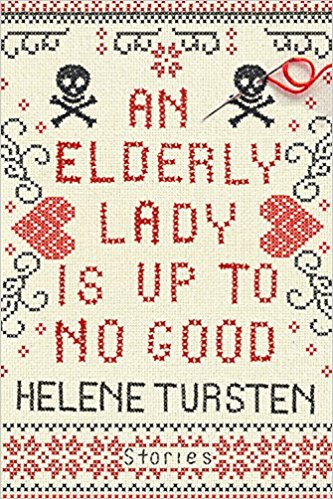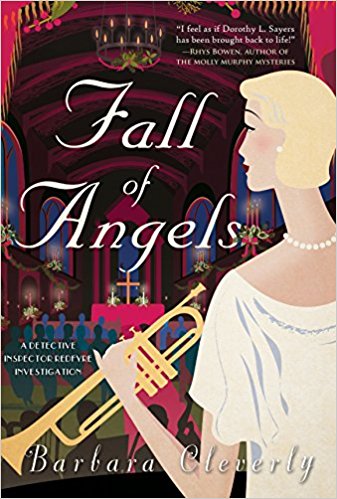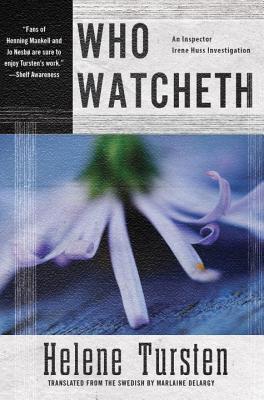 An Elderly Lady is Up to No Good by Helene Tursten, Marlaine Delargy
An Elderly Lady is Up to No Good by Helene Tursten, Marlaine Delargy Format: eARC
Source: supplied by publisher via Edelweiss
Formats available: hardcover, ebook
Genres: mystery, short stories
Pages: 184
Published by Soho Crime on November 6, 2018
Purchasing Info: Author's Website, Publisher's Website, Amazon, Barnes & Noble, Kobo, Bookshop.org
Goodreads
Maud is an irascible 88-year-old Swedish woman with no family, no friends, and…no qualms about a little murder. This funny, irreverent story collection by Helene Tursten, author of the Irene Huss investigations, features two-never-before translated stories that will keep you laughing all the way to the retirement home.
Ever since her darling father’s untimely death when she was only eighteen, Maud has lived in the family’s spacious apartment in downtown Gothenburg rent-free, thanks to a minor clause in a hastily negotiated contract. That was how Maud learned that good things can come from tragedy. Now in her late eighties, Maud contents herself with traveling the world and surfing the net from the comfort of her father’s ancient armchair. It’s a solitary existence, but she likes it that way.
Over the course of her adventures—or misadventures—this little bold lady will handle a crisis with a local celebrity who has her eyes on Maud’s apartment, foil the engagement of her long-ago lover, and dispose of some pesky neighbors. But when the local authorities are called to investigate a murder in her apartment complex, will Maud be able to avoid suspicion, or will Detective Inspector Irene Huss see through her charade?
My Review:
I picked this up because I loved the title. And because I read one of the author’s previous books in her Inspector Huss series (Who Watchetch) and liked it very much. So I was hoping for more of the same, both in the style and of the character.
And I was in the mood for a mystery. I got a tiny taste of Inspector Huss – but I’m not so sure about the mystery – because we always know whodunit.
Mostly, I got a variation on Arsenic and Old Lace, with a much smaller cast and no lace. Also, the old lady administering the equivalent of the arsenic isn’t nearly so lovable. – but she’s twice as irascible.
She’s also much better at hiding her tracks.
There’s a part of me that wants to be Maud when I’m her age. After all, she’s in her late 80s in these stories, and is perfectly capable of traveling around the world by herself at a whim, as well as able to climb through her own apartment windows in order to cover up a bit of murder.
I’d want the first part but not the second. Maud’s answer to taking care of situations that bother her is just murder. And she doesn’t even seem to have much of a conscience about it.
Great health, lousy ethics. Not that the people that we see her eliminate aren’t due for a bit of trouble, but murder seems a bit drastic. Most of the time.
The stories in this collection that are the most interesting are the two at the end, The Antique Dealer’s Death and An Elderly Lady is Faced with a Difficult Dilemma, because they show the same crime from two rather different perspectives.
In The Antique Dealer’s Death Inspector Irene Huss is called to Maud’s apartment, The elderly lady has found a dead body stewing in one of the unused rooms. We see Maud at her best, pretending to be confused and frail, but by this point in the collection we know it’s an act.
The police, however, do not. They take the old lady’s behavior at face value, which is always a huge mistake. Maud’s behavior can never be taken at face value. We watch both the police and even an amateur detective who gets roped into the scene fix their sights on the dead antique dealer having an accomplice who killed him and scarpered when they attempted to rob the old lady. And we know they are all barking up the wrong tree – or scaffolding.
But in the companion story, An Elderly Lady is Faced with a Difficult Dilemma, we see Maud in all of her excellent health, equally excellent planning, and slightly sociopathic glory as she discovers the antique dealer in the process of robbing her and decides not just to kill him but also how to fool the police.
As she does, and does well. The Inspector does figure out at the end that the only logical conclusion to the crime is that Maud did it, but she is also aware that there is no way to prove it.
Maud is just too good when she is up to no good.
Escape Rating A-: Lesson to be learned, never take an old lady for granted, she may be more than she seems. Maud’s “adventures” make for grisly fun, and a quick read if you’re in the mood to dip into a bit of Scandinavian noir.

 Fall of Angels (An Inspector Redfyre Mystery) by
Fall of Angels (An Inspector Redfyre Mystery) by  Who Watcheth by
Who Watcheth by